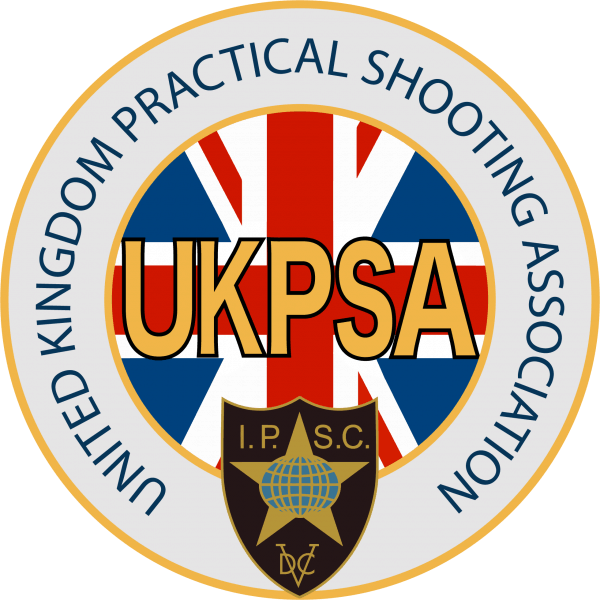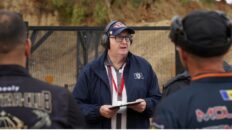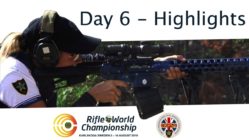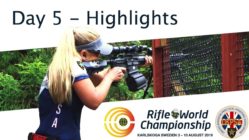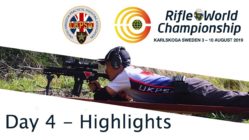Results of UKPSA HSE Lead Consultation survey
Following the launch of the HSE’s UK REACH – Public Consultation on Lead in Ammunition on the 10th October 2023. The United Kingdom Practical Shooting Association (UKPSA) as the National Governing Organisation for the International Practical Shooting Confederation (IPSC) in Great Britain, and as a registered charity whose aim it is to provide training in the safe use of sporting firearms with the objective of promoting the amateur sport of IPSC target shooting, asked its members and the wider dynamic target shooting community to provide feedback on the potential socioeconomic impacts of a prohibition of lead in ammunition.
The UKPSA posed the following questions;
- Are you a current member of the UKPSA?
- How old are you?
- Do you participate in IPSC/Practical Shooting?
- Which IPSC/Practical disciplines do you participate or have interest in?
- What best describes your current participation level?
- Is sports shooting a principal sporting activity for you?
- Does sports shooting provide you with an opportunity to socialise with friends/family?
- If the opportunity to shoot was diminished, would you be less active as a person? For example would you go outside less, would your life become more sedentary?
- Do you consider sports shooting to be an important part of your identity or way of life?
- Approximately, how much do you spend on shooting activities each year?
The UKPSA survey ran for two weeks between the 26th October 2023 and the 9th November 2023 and during this time it received 1,085 individual responses.
Summary of responses
In response to Q.1 – Are you a current member of the UKPSA?
Of those who responded to the survey, 675 were members of the UKPSA. This represents 48% of the organisations total membership. The additional 410 responses came from
non-members who are actively engaged in dynamic target shooting, or wish to be. It has been estimated that there is a population size of circa 5,000☨ individuals participating in IPSC and/or dynamic target shooting at grassroots/club level in Great Britain, giving the survey a response rate of 22%.
Compared directly with the HSE’s previous consultation on the prohibition on lead in ammunition which amassed a total of 2,759 responses over 6 months from a potential population size of 67.33 million. The UKPSA survey, which has a closely comparable sample size to that of the HSE’s original survey, can be considered to have a significantly reduced margin of error and an increased confidence level in the survey results.

In response to Q.2 – How old are you?
This was an optional question which 98% of respondents answered.
From these responses it can be seen that the IPSC and/or dynamic target shooting population is principally within the 35 to 54 yr old category indicating the sport is hard to access for younger people. This is likely due to the existing legislative requirements regarding the control of firearms, which is a limiting factor as it imposes a stringent requirement on individuals to obtain either a firearm or shotgun certificate in order to participate. Unlike other sports, shooting is a licenced activity which results in there being a need to have a private property, a demonstrable history of good character and stable home life, for which there is an associated financial cost. As such it can be concluded from the
responses to this question that IPSC and/or dynamic target shooting requires time, and a good degree of personal economic activity to enable participation.
In addition to the level of personal economic activity that IPSC and/or dynamic target shooting generates, it is also a demonstrable activator for a section of the UK population who are normally beginning to become sedentary as the ability to compete or participate in other highly physical sports i.e. football, rugby or hockey, begins to reduce. Sport England have stated that, “1 in 4 people in England do less than 30 minutes of physical activity a week, while a staggering 1 in 6 deaths is caused by inactivity, that’s the same as smoking”(1). It is clear from the survey results that IPSC and/or dynamic shooting is a significant ‘activator’ of older adults 55+ and the elderly 65+, and it is surmised that due to the licensing requirements and the high bar to entry, those who enter the sport as young adults remain active within the sport for the duration of their lives. They ‘start active and stay active’, which was the theme and recommendation by the four Chief Medical Officers (CMOs) of England, Scotland, Wales and Northern Ireland in 2011(2). The CMOs concluded in their 2011 report that even small increases in physical activity provided protection against chronic disease and improved quality of life. In addition to providing protection from chronic disease the report also highlighted the direct link between sedentary behaviour and all-cause mortality, type 2 diabetes, some types of cancer and metabolic dysfunction. The report went on to state that older adults (65+) who participate in any amount of physical activity gain some health benefits, including maintenance of good physical and cognitive function.
Further to the direct physical benefits that can be associated with participation in IPSC and/or dynamic target shooting particularly for older adults and the elderly, there is a direct positive economic impact to the UK economy. The UK population is 20% less active than in the 1960s and it is anticipated that this will increase to 35% by 2023. The physical inactivity associated with the 1 in 6 deaths in the UK is estimated to cost £7.4 billion annually (including £0.9 billion to the NHS alone)(3).
If IPSC and/or dynamic shooting were to cease it would be reasonable to conclude that whilst some of the younger adults would find alternative activity, it is highly likely that the over 55 group, and in particular the 65 and over group would not, resulting in an increased sedentary lifestyle putting them at a high risk of chronic disease.

In response to Q.3 – Do you participate in IPSC/Practical Shooting?
Of the 1,085 respondents actively participated in or expressed an interest in participating in IPSC and/or dynamic shooting. The 8% of respondents who did not participate in IPSC and/or dynamic shooting did participate in other forms of target shooting.

In response to Q.4 – Which IPSC/Practical disciplines do you participate or have interest in?
It is clear that shotgun is by far the most popular IPSC or ‘Practical’ discipline with over 81% of respondents indicating their participation in that discipline. Mini-Rifle and Handgun (known as long barrelled pistols in Great Britain due to legislative restrictions on minimum barrel length) were also highly popular and had high rates of participation. These findings are significant due to the type of ammunition used for these firearms i.e. lead birdshot for shotgun, and lead .22lr bullets for mini-rifle and long barrelled pistols.

In response to Q.5 – What best describes your current participation level?
From the over one thousand individual responses provided, it can be seen that the vast majority of participants in IPSC and/or dynamic shooting are engaging with the sport at the club level, with a significant number who are new to the sport. This is an important indicator of IPSC and/or dynamic shooting being principally a grassroots sporting activity.
The results also indicate that almost a quarter of respondents are participating at a ‘regional level’ which is to say they are competing ‘inter-club’ within the UK. This indicates that whilst
most IPSC and/or dynamic shooting activity is occurring at club level, there is a significant amount of engagement and activity between clubs resulting in a high degree of travel and associated economic activity occurring amongst the IPSC and/or dynamic shooting population, particularly when considering the larger estimated population of circa 5,000.

In response to Q.6 – Is sports shooting a principal sporting activity for you?
The results of this question clearly indicate that IPSC and/or dynamic target shooting is the principal sporting activity for respondents. Therefore IPSC and/or dynamic shooting represents value and importance with regard to maintaining an active and engaged community. It could be surmised from this significantly high result of over 95%, particularly considering the larger estimated size of the IPSC and/or dynamic target shooting community, that should IPSC and/or dynamic target shooting be removed, that a sizable number of older and elderly adults will reduce their physical activity and become more sedentary, and many younger adults will not continue on with any form of sporting or physical activity.

In response to Q.7 – Does sports shooting provide you with an opportunity to socialise with friends/family?
In addition to the negative effects of the lack of activity and increase in sedentary lifestyle that could result from the loss of IPSC and/or dynamic target shooting, would be the compounding effects of social isolation and loneliness that such an event would create. It is clear from the respondents that almost 100% of participants in IPSC and/or dynamic target shooting rely upon this activity as a way of maintaining social links to friends and
family. Once again, taking into consideration the large proportion of older and elderly adults that actively participate in the sport should be a major consideration as it is reasonable to conclude that the loss of IPSC and/or dynamic target shooting for an older participant will lead to isolation and loneliness which, is linked to a reduction in well-being and quality of life, often resulting in the onset of poor health and ultimately an early death(4).
It is a fundamental duty of government to implement policies that improve social welfare(5) but the enforced isolation and resultant reduction in quality of life and well being, as a result of any government policy that removes an individual’s ability to avoid isolation is of great concern and should be avoided both from a moral standpoint but economically, as there is a quantifiable reduction in economic activity via the monetary value of a life year (VOLY) currently estimated to be £2.8m.

In response to Q.8 – If the opportunity to shoot was diminished, would you be less active as a person? For example would you go outside less, would your life become more sedentary?
Reinforcing the responses from question 6 and 7, it is clear that a loss of IPSC and/or dynamic target shooting would result in the majority of the shooting population becoming less active and more sedentary. It can be surmised from this response that it is highly unlikely that should IPSC and/or dynamic shooting be removed from people’s lives it would not be replaced with an alternative activity.

In response to Q.9 – Do you consider sports shooting to be an important part of your identity or way of life?
Over a thousand respondents have affirmed that sport shooting is an essential part of their identity and way of life. From such a strong response it can be concluded that they find target shooting contributes to their personal growth and connects them with like-minded individuals. It also supports their mental and physical health, demanding discipline and focus. Sport shooting for them is a means of expression and an active part of their cultural heritage. Target shooting in the UK is a highly regulated activity so it is reasonable to conclude the respondents as well as the wider shooting community ensure their participation adheres to safety and legal requirements, consistent with Article 8 of the Human Rights Act 1998. This adherence emphasises the lawful nature of sport shooting, conducted with public safety in mind and without violating others’ rights. Whilst it is acknowledged that there are limitations, it is not unreasonable to believe that the right to a private life includes key personal activities like sport shooting, and that weight should be given to this feeling of identify and way of life, particularly on cultural grounds, when considering any form of restriction that would have a disproportionate and detrimental effect to this community.

In response to Q.10 – Approximately, how much do you spend on shooting activities each year?
From the responses to the amount spent, there appears to be a strong correlation with the level of participation i.e. club, regional and international. Therefore it can be concluded that those who compete at the highest level spend the most.
Analysis of the responses and pro-ratering to take into account the estimated IPSC and/or dynamic shooting population of circa 5,000 in Great Britain, the survey would suggest that there is a direct benefit to the UK economy from IPSC and/or dynamic shooting of over £20 million per annum. Due to the large sample size and relative estimated population size of the IPSC and/or dynamic shooting community, it is reasonable to set the confidence level at 95% and consider the margin of error to be low.
A highly simplified estimate of the indirect benefit to the British economy from IPSC and/or dynamic shooting based upon a marginal propensity to consume of 0.8 due to the likelihood of participation is linked to an individuals available disposable income, this increases the value of IPSC and/or dynamic shooting to the UK economy, and in addition to the £20 million of direct value, the indirect value can be estimated to be anywhere between £40m to £100m depending on how conservative a multiplier is used.
In short, it is clear that whilst the population number of IPSC and/or dynamic target shooting participants is low, their propensity to spend their disposable income is high. Therefore it is reasonable to conclude that should IPSC and/or dynamic shooting be negatively affected by a prohibition of lead in ammunition, the UK economy would experience a significant and negative direct and indirect impact.

Conclusion
IPSC and/or dynamic target shooting is a small but popular shooting sport that is active within a much larger shooting population of 539,212 individual firearm & shotgun certificate holders in England and Wales(6). There are a further 60,743 firearms, shotgun and air gun certificate holders in Scotland(7), and Northern Ireland has circa 56,000 firearms certificates on issue as of 2020. However, the PSNI nor the UK Government currently publish the exact number of certificates on issue for Northern Ireland.
From this wider population of over 650,000 individuals who are authorised to possess firearms and ammunition, it can be concluded that IPSC and/or dynamic shooting only accounts for less than 1% of shooting activity, yet has a disproportionately positive impact on direct economic activity, c.£20m, and is a net contributor to the health and well-being of a hard (+55yr olds) and extremely hard (+65yr olds) to activate sectors of the UK population.
Therefore, should a prohibition of lead in ammunition be enforced before there are technically workable and economically viable solutions in place to ensure the continuation of the sport of IPSC and/or dynamic shooting, this small but valuable grouping of sports men and women will be deleted from the UK’s active population.
With such a small population size participating within the sport of IPSC and/or dynamic shooting, the risk posed from lead exposure to both humans and avians is de minimis given the context of these activities only taking place on designated IPSC and/or dynamic shooting ranges. Furthermore, the harm to the environment from shooting sports is largely subjective and the data used to justify restrictions appears to have been widely criticised as being misinterpreted, outdated, and often taken out of context. The UKPSA survey provides clear evidence that a prohibition of lead in ammunition will create a disproportionate level of harm to the health and well-being of the IPSC and/or dynamic target shooting community.
From the information obtained from the UKPSA’s survey regarding the economic benefits of IPSC and/or dynamic target shooting, it can be concluded that this relatively niche sport has a significant and disproportionately positive impact on the UK economy. If the prohibition of lead in ammunition was to be enforced prior to viable alternatives being found and readily available to the IPSC and/or dynamic shooting community, there is significant risk the UK economy would experience localised shocks, particularly in those areas that support shooting sports generally. This would result in localised economic downturns for commercial businesses that rely upon shooting as they become less profitable, or even unsustainable, due to the enforced fall in participation that a prohibition of lead in ammunition will instigate. The worst impacted will be those rural economies that support the shooting industry, leading to disproportionate financial hardship being experienced within these communities and a widening gap between urban and rural communities which be in direct contravention of the Department for Levelling Up, Housing and Communities ‘Levelling Up White Paper’ published on 2 February 2022(8).
Respondents to the UKPSA survey clearly indicated that shotgun is the most popular IPSC discipline in Great Britain. If a lead in ammunition prohibition was to be implemented it would disproportionately affect the IPSC and/or dynamic target shooting community as the targetry used for IPSC shotgun is principally made from mild steel or high carbon steel. Lead having a low Brinell number (5HB to 22HB) is currently the only suitable ammunition type as it fragments on impact and doesn’t cause dangerous ricochets. Unlike clay or game shooting where a switch to steel shot might not result in any demonstrable difference to the target impact and subsequent effects i.e. ricochet, this is not true of IPSC and/or dynamic target shotgun shooting. Currently there are no viable alternatives, bismuth being the most likely substitute, however this is not economically viable with prices being in excess of £1.35 per cartridge, as opposed to 30p per cartridge for a lead equivalent. A typical IPSC club shooter will consume between 1500 to 5000 cartridges per year, with those competing at a regional or international level, consuming over 20,000 cartridges. An enforced switch to bismuth
would certainly make the sport economically unviable, resulting in the likely closure of IPSC and/or dynamic target shooting clubs which would be a loss of an important community amenity, with the knock on effect being a less active population, and localised economic hardship for the businesses that currently support this activity.
It should be noted that unlike clay pigeon or live game shooting, IPSC shotgun is a target shooting discipline that involves engaging a target, or an array of targets that are placed within a set location, often on an existing shooting range and at ground level or at a height that is generally no higher than 1.5m, resulting in all fired pellets or projectiles being captured within the designated range space making it possible to recover the lead.
In addition to the high rate of participation for IPSC shotgun, respondents also indicated a high level of participation in the IPSC Mini-Rifle and Handgun (GB compliant types) disciplines. Both of these disciplines use .22lr ammunition, and are always shot on shooting ranges, limiting the suggested risk of putting lead into the wider environment. To date, the UKPSA is not aware of any ammunition manufacturer who has been able to bring a viable alternative product to market, nor are any suggesting that they will be able to do so.
Considering the high global consumption of .22lr ammunition and the large number of ammunition manufacturers who produce this type of ammunition, it can be concluded that it will never be possible to replace lead for .22lr ammunition. As such, should a prohibition of lead in ammunition be enforced, IPSC Mini-Rifle and Handgun will no longer be a viable discipline in Great Britain for those target shooting clubs that do not have access to large (50m+) indoor ranges, and there will be similar negative effects in the reduction in community amenity, enforced isolation of current participants likely resulting in an increase in sedentary lifestyles, particularly amongst those who are most at risk of developing chronic disease due to lack of activity.
In addition to the negative community, economic, health and well-being effects that a prohibition of lead in ammunition will create. Implementing it only for civilian target shooting, whilst allowing the military and police to continue its use, despite their activities certainly causing more pollution generally, is inconsistent and raises questions about the fairness and effectiveness of any prohibition of lead in ammunition, thus undermining public trust in the government. This should be of great concern to the government following the continued criticism and deep distrust of its actions, and the actions of its agencies following the
mis-management of the Covid-19 lockdowns, including the dubious scientific basis on which they were founded and highly suspect way they were enforced.
To date neither the HSE, nor UK Reach has been able to communicate any justifiable environmental reasons for a civilian ban whilst allowing the continued use by military and law enforcement. In addition, neither organisations have been able to demonstrate how the removal of one source of lead can be expected to deliver the claimed environmental benefits of such an action, particularly considering the high proportion of field firing range facilities used for national defence often encompass large, undeveloped areas that are important for managed wildlife conservation. Any civilian lead ban should only occur at the point where steps are being taken to address lead pollution from all sources, including military and police use or this action will further erode and undermine the public’s trust in government environmental policy due to the ethical inconsistency and a recent history of following flawed scientific advice.
If the UK government moves to support UK REACH and the HSE’s prohibition then they must take full responsibility for the detrimental impacts of taking such action, particularly due to the enforced loss of the important local community amenity that IPSC and/or dynamic shooting clubs provide. The UK government has a duty to protect all communities from discrimination, particularly if its actions unfairly disadvantage any particular community, with specific measures being taken to compensate that community for its loss of amenity via the provision of alternatives. From the UKPSA survey it has been clearly demonstrated that shooting forms a major part of people’s identity and way of life. Whilst not a protected characteristic, shooting sports and gun ownership are integral to British culture, even if only participated amongst a minority group. Taking actions to prohibit all lead in ammunition, over all outdoor facilities is not proportionate to the scale of the issue nor the actual risks that lead in the environment presents particularly considering its continued widespread use in the built environment. In the case of IPSC and/or dynamic shooting, public investment in modern indoor shooting facilities would be a reasonable counter action for the government to take to sufficiently offset the very real risk of socioeconomic harm that would be caused via the loss of outdoor shooting facilities.
The current proposal to remove lead from ammunition will unfairly and unreasonably affect the IPSC and/or dynamic shooting community. To date, the HSE’s consultations have been far too narrowly focused and no attempt has been made to liaise directly with the UKPSA as the National Governing Organisation for IPSC in Great Britain. Should the prohibition of lead in ammunition be implemented, it is of crucial importance that the HSE liaise directly with the UKPSA to agree appropriate derogations to ensure the continuation of IPSC and/or dynamic target shooting can continue at designated venues.
Should the prohibition of lead in ammunition be enforced then to ensure the risk of any socioeconomic harm is minimised, it is of critical importance that the UKPSA as the National Governing Organisation for IPSC shooting in Great Britain be given clear and workable derogations to allow its activities to continue. The sport of IPSC and/or dynamic target shooting is a highly controlled sporting activity with UKPSA members undergoing training in the safe use of firearms. The National Range Officers Institute (NROI), a subsidiary organisation of the UKPSA, is responsible for the training of IPSC Range Officers ensuring the safe conduct of all IPSC competitors, range personnel and 3rd parties, including the general public, involved in or potential affected by any IPSC target shooting activity. As such, there exists a framework within which derogations could be developed and managed for IPSC and/or dynamic target shooting via the UKPSA, as the recognised National Governing Organisation for IPSC shooting in Great Britain.

☨. The UKPSA has 75 affiliate clubs with an average of over 50 members per club who are not individual members of the association. The combination of individual membership and non-members participating in IPSC shooting at UKPSA affiliated clubs is the basis for the conservative population estimate of 5,000, although this number could be much higher if non-affiliated Home Office approved rifle & muzzle-loading pistol clubs were to be included as there is strong evidence that IPSC and/or dynamic shooting take place within these organisations too. However, to ensure high confidence in the survey results and the lowest margin of error possible, these potential additional participants have not been included.
- Inactive people, Sport England
https://www.sportengland.org/research-and-data/research/inactive-people
- Start Active, Stay Active – A report on physical activity for health, Department of Health, Physical Activity, Health Improvement and Protection 11 July 2011
https://sportengland-production-files.s3.eu-west-2.amazonaws.com/s3fs-public/dh_128210.pdf?VersionId=yKg5Mvm SSUWtL66YyDfgs5UDMcxYP9tT
- Why promote physical activity in your professional practice? Office for Health Improvement & Disparities 10 March 2022
https://www.gov.uk/government/publications/physical-activity-applying-all-our-health/physical-activity-applying-all-our- health
- All the Lonely People: Loneliness in Later Life – AgeUK September 2018
https://www.ageuk.org.uk/globalassets/age-uk/documents/reports-and-publications/reports-and-briefings/loneliness/lo neliness-report_final_2409.pdf
- A scoping study on the valuation of risks to life and health: the monetary value of a life year (VOLY) – HSE https://assets.publishing.service.gov.uk/media/5f1aaf243a6f40727ae8fa3b/voly-scoping_study-report.pdf
- Statistics on firearm and shotgun certificates, England and Wales: April 2021 to March 2022 https://www.gov.uk/government/statistics/statistics-on-firearm-and-shotgun-certificates-england-and-wales-april-2021- to-march-2022/statistics-on-firearm-and-shotgun-certificates-england-and-wales-april-2021-to-march-2022
- Firearms licensing regulations in Scotland – Third Report of Session 2022–23 December 2022 https://publications.parliament.uk/pa/cm5803/cmselect/cmscotaf/710/report.html#:~:text=As%20of%20September%2 02022%2C%20there,issue%20in%20England%20and%20Wales.
- Department for Levelling Up, Housing and Communities ‘Levelling Up White Paper’ 2 February 2022 https://assets.publishing.service.gov.uk/government/uploads/system/uploads/attachment_data/file/1095544/Executive_Summary.pdf
